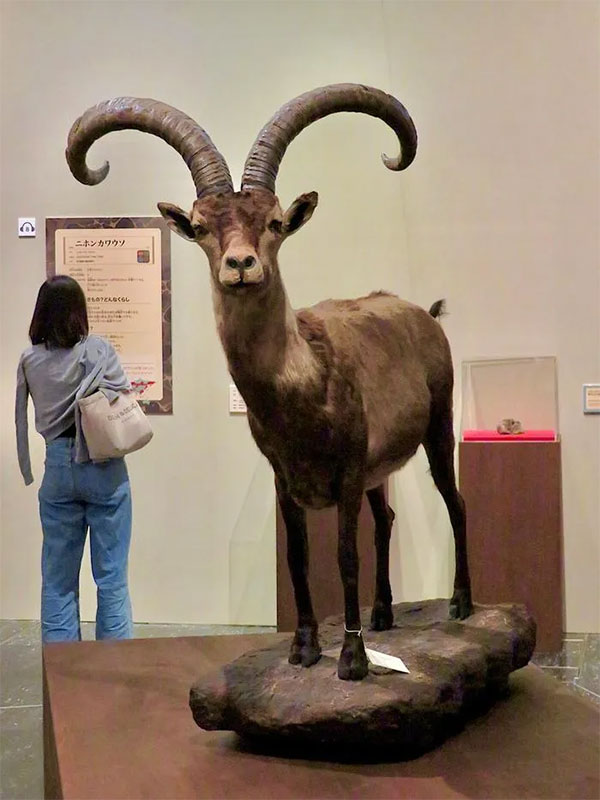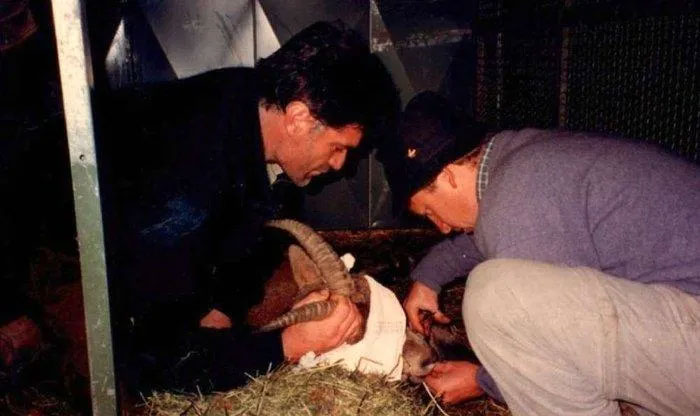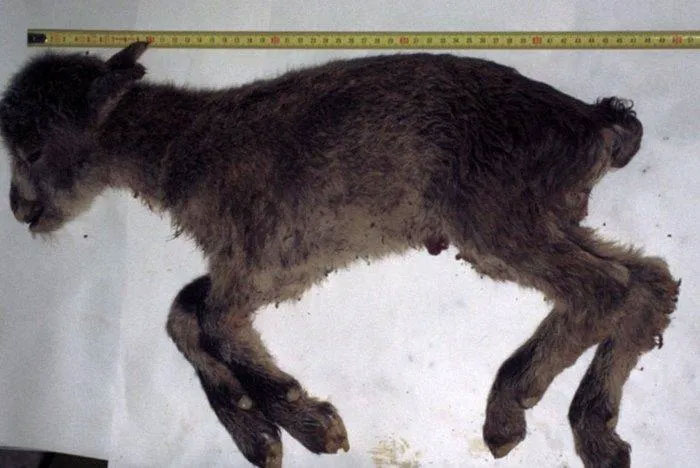The Pyrenean ibex is the first animal to be brought back from extinction. It is also the first species on our planet to go extinct twice.

Pyrenean ibex.
In 2003, a Pyrenean ibex was born as part of a “resurrection project” in Spain, but it only survived for 10 minutes. Despite its brief life, this small mammal represented a significant scientific breakthrough.
The Pyrenean ibex, also known as bucardo or Pyrenees ibex, was once a common species in the serene Pyrenees mountains, bordering France and Spain. Although native to the region, its distinctive large curved horns made it a target for many European hunters. By the latter half of the 20th century, the most common sight of this goat was as mounted specimens on walls rather than wandering the hills.

Bucardo, one of the four subspecies of the Iberian ibex, was once commonly found in the Cantabrian mountains, southern France, and northern Pyrenees.
In the 1980s, recognizing that this species was on the brink of extinction, many animal conservation organizations attempted to breed and preserve it, but it may have been too late. By 1997, only one Pyrenean ibex remained on our planet. Forest rangers found her at the age of 13 lying under a fallen tree in a remote area of Ordesa National Park in January 2000 and named her Celia.

The last Pyrenean ibex, Celia, being anesthetized for cell sampling.
Alberto Fernández-Arias, a wildlife veterinarian who had previously studied the reproductive biology of this goat in Spain, managed to take cell samples from her ear and rib before she went extinct. These samples were later sent to a laboratory, cultured, and then subjected to deep freezing.
At the time the cells were cultured, cloning mammals was not yet possible. However, after the successful cloning of Dolly the sheep changed the scientific community’s perception, the fate of this ibex also changed.
Using Alberto’s expertise and techniques similar to those used for cloning Dolly, a team of French and Spanish scientists led by Jose Folch began experimenting with Celia’s cells. They extracted nuclei from them and injected them into goat eggs that had their genetic material removed. A total of 57 embryos were successfully implanted into a hybrid between a Spanish ibex and a domestic goat. However, only 7 hybrids became pregnant, 6 of which miscarried, leaving only 1 that successfully carried to term.

The first and only resurrected Pyrenean ibex, but it lived only 10 minutes after birth.
On July 30, 2003, a female Pyrenean ibex was born. This marked the first time in human history that people could help resurrect an extinct species. However, this moment was incredibly brief.
“As soon as I held the animal, I knew it was suffering from respiratory failure. We had prepared oxygen and special medications, but it couldn’t breathe normally. Within seven to ten minutes, it died,” Alberto stated.
After this failure, the resurrection project for the Pyrenean ibex continued, but the results of this attempt were not published to the international scientific community until 2009. However, by this time, the project’s funding had run out, and it had to be closed. Thus, the Pyrenean ibex officially went extinct once again, making it the first and only species on our planet to go extinct twice.
The Pyrenean ibex is a species with seasonal fur changes. In summer, its coat is short, while in winter, it becomes longer and thicker. However, the fur on their necks remains long regardless of the season. Males and females can be distinguished by differences in color, fur, and horns. Males are light gray-brown throughout the summer, with additional black patches in certain areas like the mane, front legs, and forehead. In winter, males transition from gray-brown to dull gray, and the areas that were once black become faded and dull. However, females can be mistaken for deer due to their brown fur in summer. Unlike males, females of this species do not have any black patches.


















































